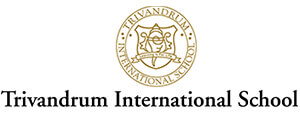Digitization grappled the world almost two decades ago and has had a visible impact on every walk of life. We now live in an increasingly hyper-connected world. In current times, the internet is immediately and easily accessible. It enables people, businesses and even machines to communicate with each other instantly and seamlessly. Our society is undergoing a fundamental transformation while the internet brings about new opportunities and risks. Needless to say, these changes impact the education sector. Thus the importance of digitization in education is immense.
Digital education tools and the proliferation of internet access devices across the globe has revitalised the process of education. It has given the power of time and pace in the hands of the students where they have access to information whenever and wherever they like.
How digitalization is affecting the education system
The digital technologies which have rapidly evolved in nature and utility over the past decade have eliminated the restrictions of time and space. Technology helps teachers focus on the learning needs of each and every student along with helping them keep up with the latest information on the subject themselves. The advent of interactive and adaptive software enables students to learn not only at their own pace but also in their own style. The style of learning is no longer restricted to the one followed by a teacher but can be unique to each student. Study material and content is available extensively on various platforms and it ranges from the good old literature to new engaging and interactive videos and software to games and webinars. Digital content allows teachers to update the content with changing times with ease and helps them give each student a personalised study plan which can help them year after year.
How Digitalization Is Affecting the Education System?
However, digitization has its positives and negatives. Even though there exists a huge digital divide in education in India along with other challenges of digital education in India, the importance of digitization in education is immense. The widespread use of technology has affected all walks of life. These changes have been mostly positive. Students have the aid of technology to help them understand their concepts, schoolwork and homework while teachers use technology to enhance their lessons. Some benefits of technology are:
Availability of content: The school library might be limited to a selection of titles and some books might be outdated and it might leave the students with half or incorrect information. But, with the aid of technology and internet access devices, they can get information from digital encyclopaedia to various research papers at their disposal. The guidance of a teacher is important here to affirm the legitimacy of the content that the students are consuming. Many schools make use of software that provides the students with authentic content.
Networking with their peers from around the globe: There are websites like Glovico which help students learn foreign languages by pairing a group of students with a teacher from another country. The internet helps students meet their counterparts sitting in various parts of the world, virtually, without ever leaving their classrooms. This helps students interact with people from different cultures from a very young age and opens their minds to various ideas, concepts and information.
Gamification: Gamification is a way of teaching the kids difficult concepts through the medium of a game to help them grasp them better. Games are one of the first things that students are introduced to when they are introduced to computers. Computers and the internet have become a vital part of our education system and teachers should continue to make use of various ways to teach students in a better manner.
Enhances Creativity: Digital learning should also enhance creativity of the students. Educational systems have been forced in the past to downplay creativity to a point in order to meet the standards for academic achievement. Have you noticed that some schools do not place a high priority on the fine arts? This is because the core curriculum does not identify the fine arts as high priorities. Through the use of digital learning, education should be able to stress the use of the students’ creativity while at the same time meeting the academic standards that are expected. In fact, a collaboration between academics and creativity has been proven to increase comprehension levels. When it comes to using the student’s creativity in the classrooms, there should be no hesitation for either the students or the teachers.
Education without borders: Digitization allows the correspondence courses to run smoothly because the previous method of sharing notes by post has been replaced by sharing information via the internet which makes it almost instantaneous. The process is now simpler, easier and it helps students remain on track. It also allows students to access web seminars held by museums and educational institutions, virtually which would otherwise prove to be extremely costly. It helps those with limited resources and amenities. It helps them achieve the same level of education and information without the heavy cost involved.
There are various benefits of digitization like it being convenient, flexible, cost-effective, unrestricted, immediate and many more. However, there are certain limitations to the process as well. It might never allow the introverted children in the spotlight which is important for their growth and personality development. Learning online might be an impersonal process that is without the human touch of the real world. The online medium requires a lot of self-discipline which is generally lacking in kids. Therefore training the students to learn online can be a difficult process. The online medium doesn’t allow the teachers to understand whether the student has understood the subject or not. Just like any other medium and technological advancements, the internet too has its pros and cons. However, the advantages outweigh the disadvantages by a huge measure.
Importance of Digital Education in India</h2>
In India, digital technology has advanced in recent years, transforming the way children acquire topics in school. As schools increasingly use digital solutions to stay up with technological advances, the old chalk and talk technique has made way for more participatory teaching methods.
The rapidly growing metropolitan regions of India offer a fantastic chance for educational services to be digitalized. The majority of colleges and universities are attempting to stay up with digital developments by applying them in order to improve the quality of learning using the most up-to-date digital technical know-how. As a result, modern technology offers the key to solving India’s educational problems through empowering educators.
Digitization has given people new choices and the flexibility to follow their own path when it comes to personal learning and development. It has allowed institutions to expand their reach and that too with only a few extra resources. It allows everyone to get that qualification even while having other personal commitments to deal with. The internet is the saviour for many and its usage of it will continue to grow in the future with the advent of loT, Al and Virtual Reality. The students have a world of options, career prospects and a bright future ahead of them if they use technology effectively.




